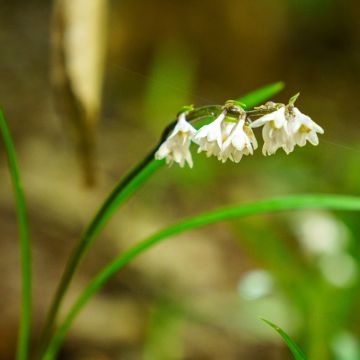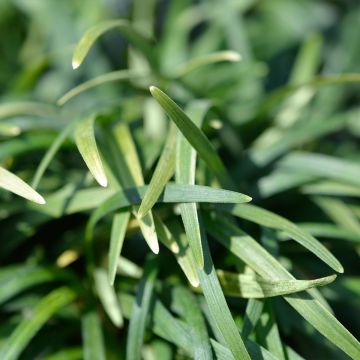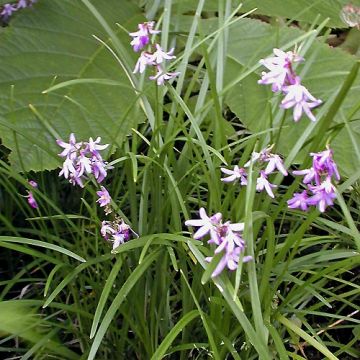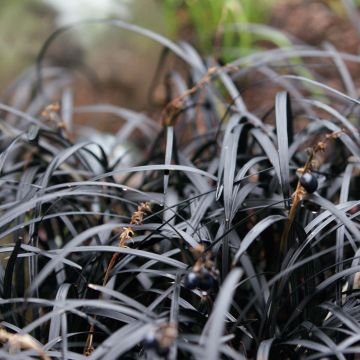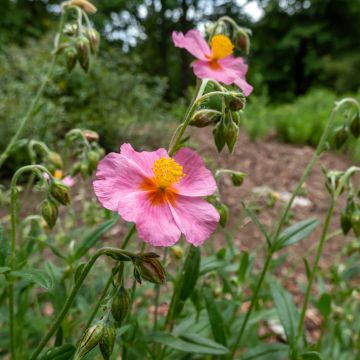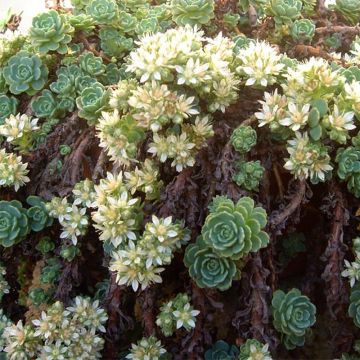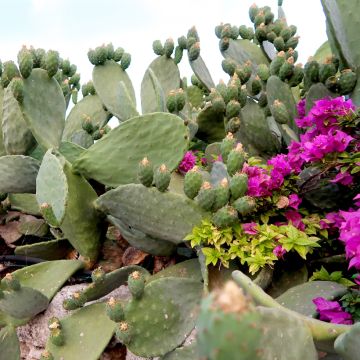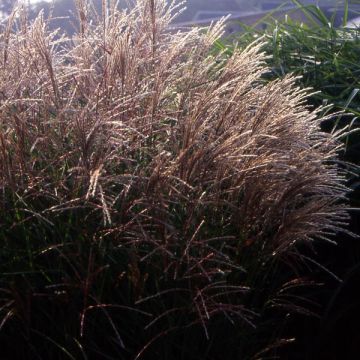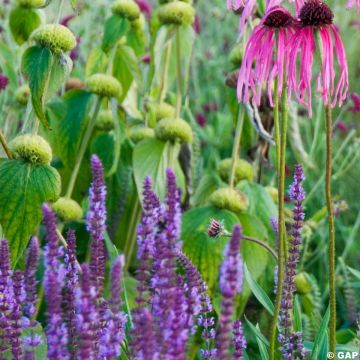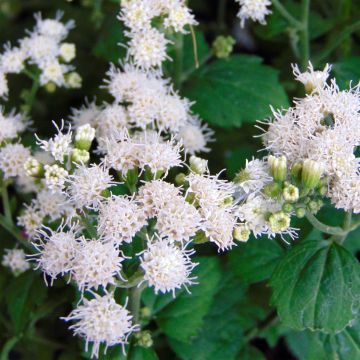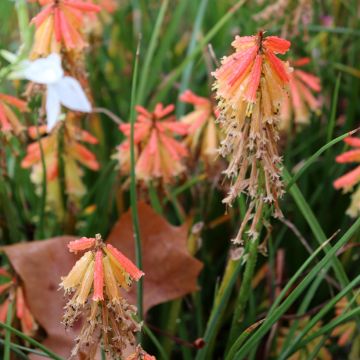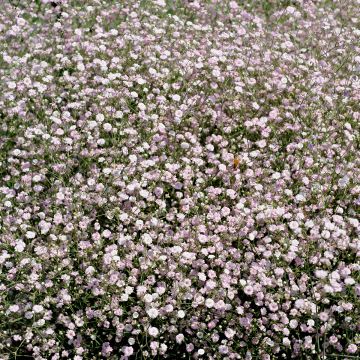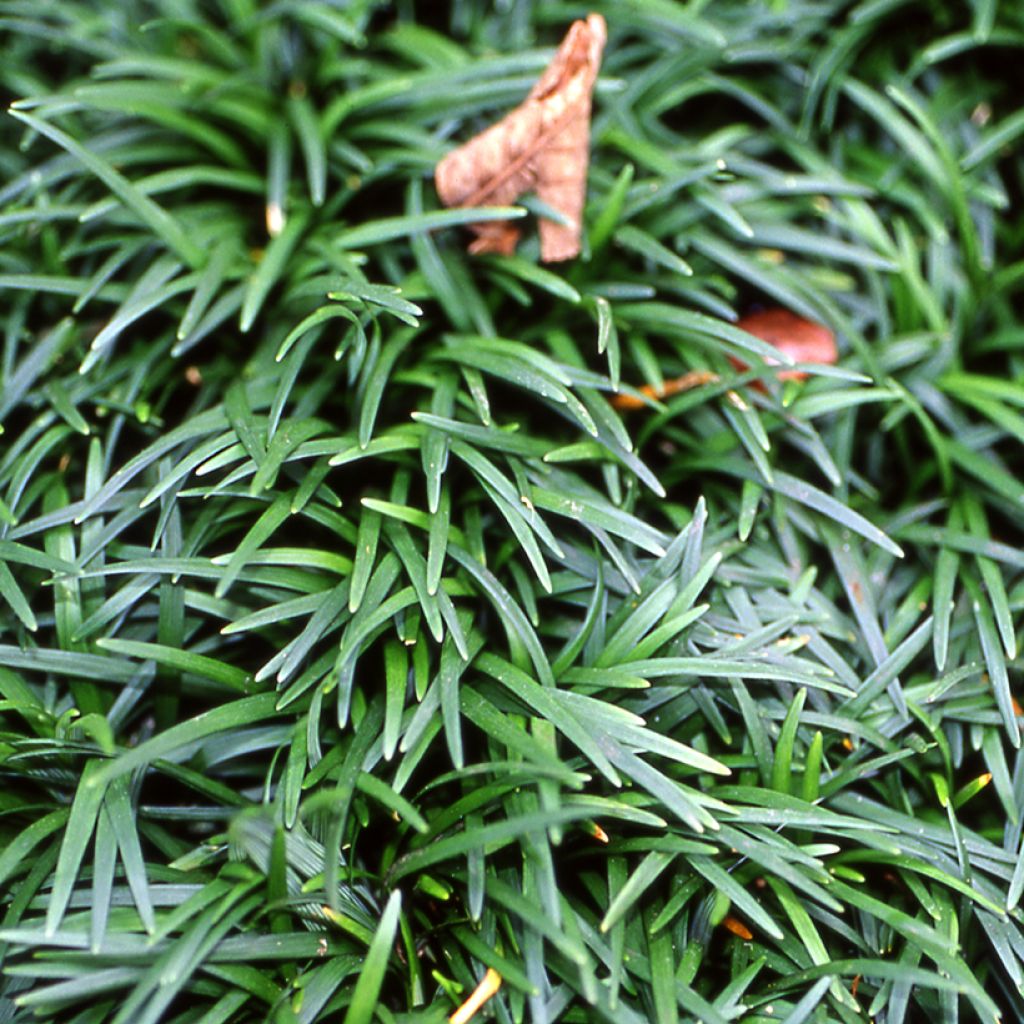

Ophiopogon japonicus
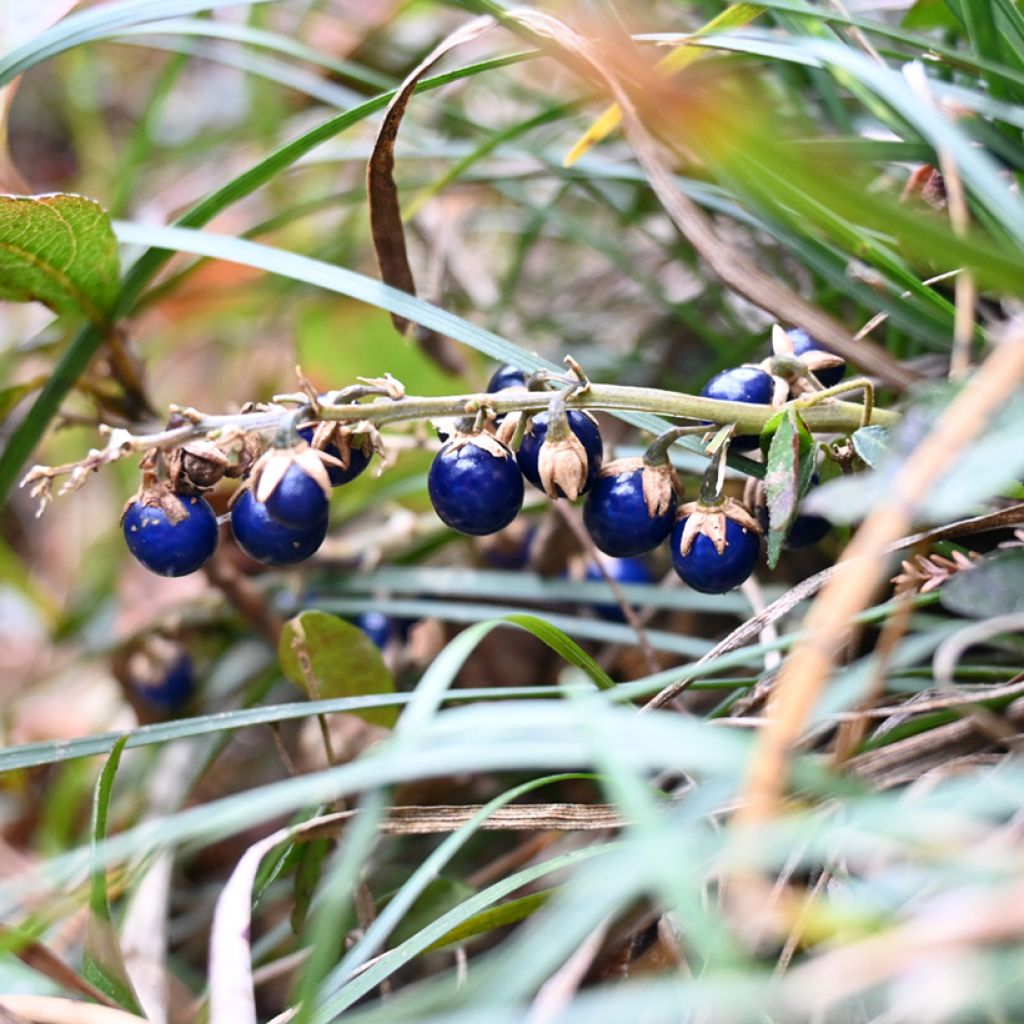

Ophiopogon japonicus
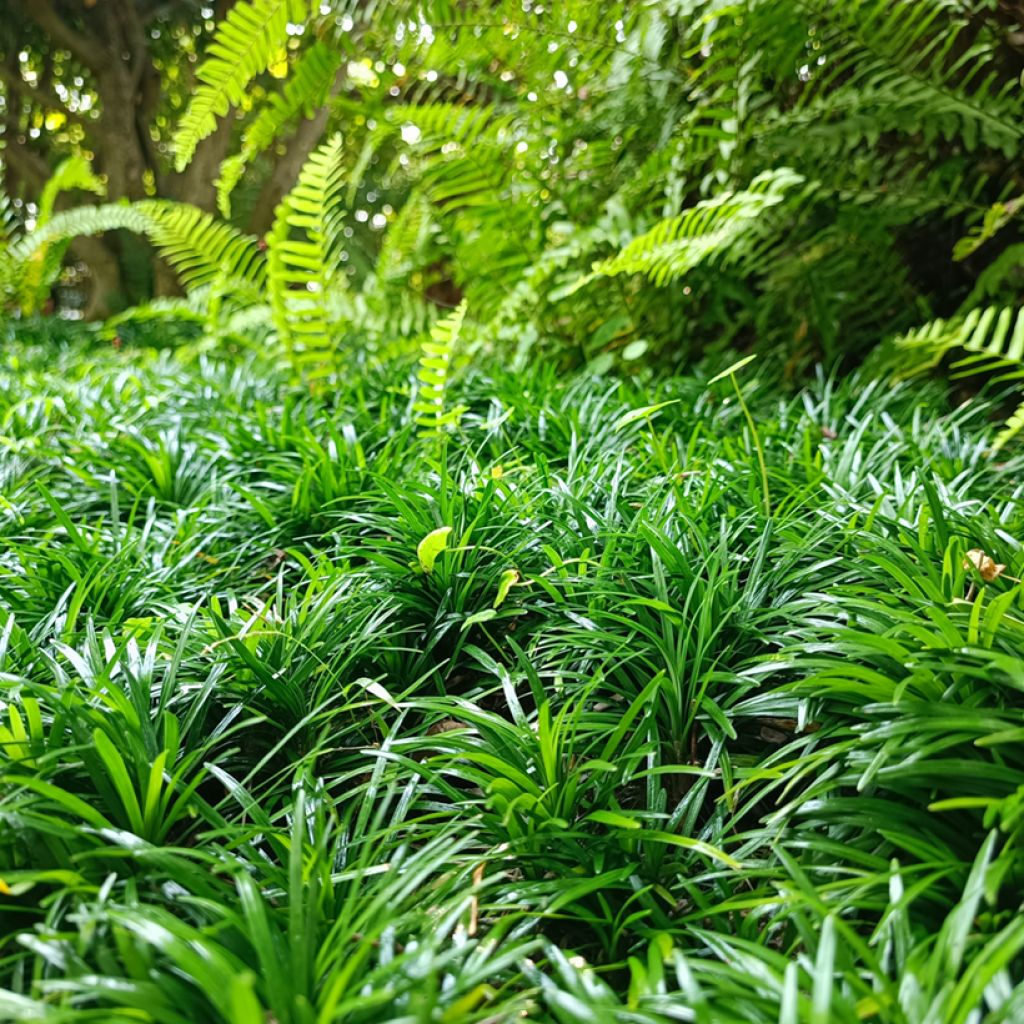

Ophiopogon japonicus
Ophiopogon japonicus
Ophiopogon japonicus Minor
Muguet du Japon, Ophiopogon du Japon, Herbe aux turquoises
Why not try an alternative variety in stock?
View all →This plant carries a 12 months recovery warranty
More information
We guarantee the quality of our plants for a full growing cycle, and will replace at our expense any plant that fails to recover under normal climatic and planting conditions.
From €5.90 for pickup delivery and €6.90 for home delivery
Express home delivery from €8.90.
From €5.90 for pickup delivery and €6.90 for home delivery
Express home delivery from €8.90.

Does this plant fit my garden?
Set up your Plantfit profile →
Description
The Ophiopogon japonicus Minor is an elegant evergreen ground cover with low-growing, grass-like foliage, very decorative under trees, along pathways, or in non-trafficked and semi-shaded areas of the garden. Its dark green, shiny grass-like leaves are adorned with discreet white flowers in late summer, followed by stunning turquoise berries, which have earned it the name 'turquoise grass'. It also grows well in pots, serving as a backdrop for flowering plants.
The Ophiopogon japonicus 'Minor' is a dwarf form of this trailing rhizomatous perennial native to Japan and Korea. It belongs to the family Convallariaceae and is a distant cousin of our Lily of the Valley. This plant grows in dense, spreading clumps that barely exceed 10cm (4in) in height but slowly extend without a theoretical limit. The growth of this 'Minor' form is slightly faster than that of the species Ophiopogon japonicus. The foliage usually persists throughout the year but can be damaged during particularly harsh winters without endangering the plant. The ribbon-like, leathery leaves are a beautiful dark green colour. Flowering occurs in July-August. The small, insignificant whitish flowers, borne on short stems, do not exceed the foliage. They are replaced by decorative pea-sized turquoise blue fruits, which persist for several weeks. Once established, this perennial requires no maintenance.
Hardy and robust, the Ophiopogon japonicus Minor has a long lifespan, and its ease of cultivation makes it a popular choice in gardens. Its main enemy is limestone. Plant Ophiopogon 'Minor' in partial shade, rich, light, and moist soil. Unlike grass, it cannot tolerate foot traffic, so plant it at the edge of woodlands, in fresh rockeries, between paving stones, or as a border in a Japanese-style garden. In a very Japanese-inspired setting, this low-growing ground cover can be planted in front of a mass of Giant Lilyturf (Liriope muscari), semi-shade Sedge (Carex), or All Gold Japanese Forest Grass (Hakonechloa All Gold), for example.
Report an error about the product description
Ophiopogon japonicus in pictures
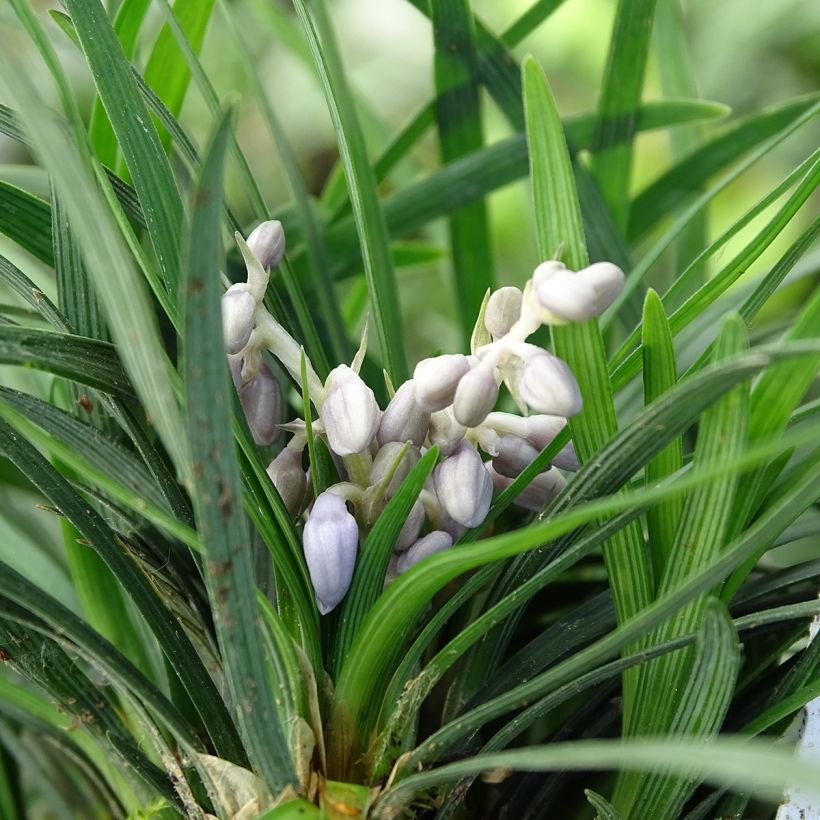

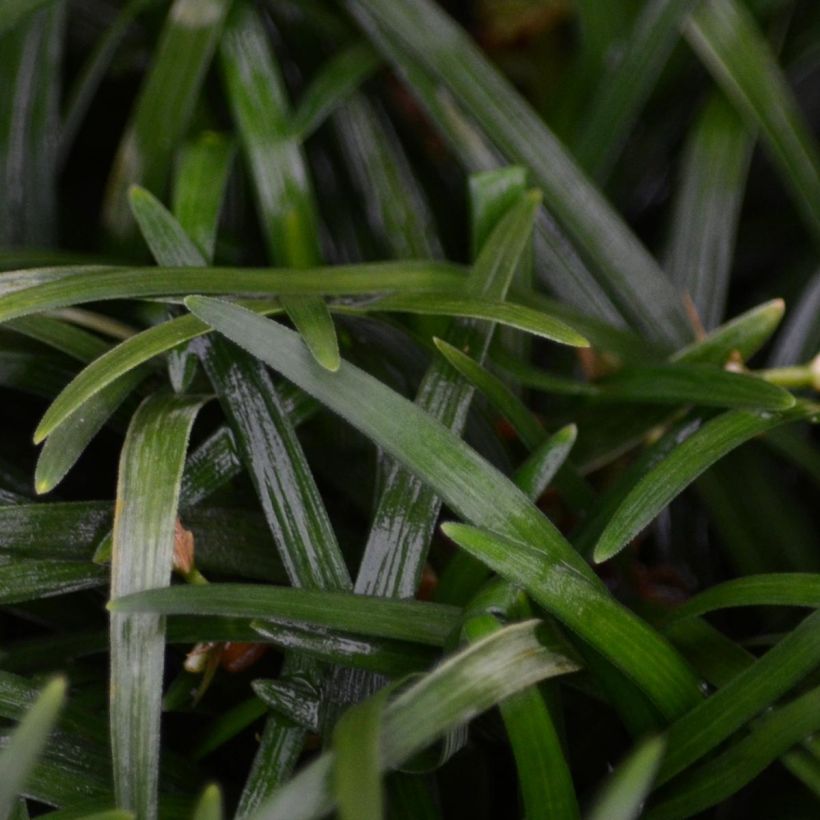



Flowering
Foliage
Plant habit
Botanical data
Ophiopogon
japonicus
Minor
Convallariaceae (Lilliaceae)
Muguet du Japon, Ophiopogon du Japon, Herbe aux turquoises
Southeast Asia
Other Ophiopogon
Planting and care
Grow Ophiopogon japonicus Minor in any fresh, partially shaded, humus-rich, lime-free soil in milder winter regions. During periods of severe cold, you can cover the clump with a litter layer of dead leaves, but only for a few days; otherwise, the foliage will suffer from overcrowding. If the foliage turns brown due to the cold, do not remove it, as it protects the stump of the plant. While it establishes itself, carefully weed and water if necessary. Make sure to protect young plants from slugs and snails in spring. Once well established, this Ophiopogon requires no maintenance.
Planting period
Intended location
Care
-
, onOrder confirmed
Reply from on Promesse de fleurs
Summer flowering perennials
Haven't found what you were looking for?
Hardiness is the lowest winter temperature a plant can endure without suffering serious damage or even dying. However, hardiness is affected by location (a sheltered area, such as a patio), protection (winter cover) and soil type (hardiness is improved by well-drained soil).

Photo Sharing Terms & Conditions
In order to encourage gardeners to interact and share their experiences, Promesse de fleurs offers various media enabling content to be uploaded onto its Site - in particular via the ‘Photo sharing’ module.
The User agrees to refrain from:
- Posting any content that is illegal, prejudicial, insulting, racist, inciteful to hatred, revisionist, contrary to public decency, that infringes on privacy or on the privacy rights of third parties, in particular the publicity rights of persons and goods, intellectual property rights, or the right to privacy.
- Submitting content on behalf of a third party;
- Impersonate the identity of a third party and/or publish any personal information about a third party;
In general, the User undertakes to refrain from any unethical behaviour.
All Content (in particular text, comments, files, images, photos, videos, creative works, etc.), which may be subject to property or intellectual property rights, image or other private rights, shall remain the property of the User, subject to the limited rights granted by the terms of the licence granted by Promesse de fleurs as stated below. Users are at liberty to publish or not to publish such Content on the Site, notably via the ‘Photo Sharing’ facility, and accept that this Content shall be made public and freely accessible, notably on the Internet.
Users further acknowledge, undertake to have ,and guarantee that they hold all necessary rights and permissions to publish such material on the Site, in particular with regard to the legislation in force pertaining to any privacy, property, intellectual property, image, or contractual rights, or rights of any other nature. By publishing such Content on the Site, Users acknowledge accepting full liability as publishers of the Content within the meaning of the law, and grant Promesse de fleurs, free of charge, an inclusive, worldwide licence for the said Content for the entire duration of its publication, including all reproduction, representation, up/downloading, displaying, performing, transmission, and storage rights.
Users also grant permission for their name to be linked to the Content and accept that this link may not always be made available.
By engaging in posting material, Users consent to their Content becoming automatically accessible on the Internet, in particular on other sites and/or blogs and/or web pages of the Promesse de fleurs site, including in particular social pages and the Promesse de fleurs catalogue.
Users may secure the removal of entrusted content free of charge by issuing a simple request via our contact form.
The flowering period indicated on our website applies to countries and regions located in USDA zone 8 (France, the United Kingdom, Ireland, the Netherlands, etc.)
It will vary according to where you live:
- In zones 9 to 10 (Italy, Spain, Greece, etc.), flowering will occur about 2 to 4 weeks earlier.
- In zones 6 to 7 (Germany, Poland, Slovenia, and lower mountainous regions), flowering will be delayed by 2 to 3 weeks.
- In zone 5 (Central Europe, Scandinavia), blooming will be delayed by 3 to 5 weeks.
In temperate climates, pruning of spring-flowering shrubs (forsythia, spireas, etc.) should be done just after flowering.
Pruning of summer-flowering shrubs (Indian Lilac, Perovskia, etc.) can be done in winter or spring.
In cold regions as well as with frost-sensitive plants, avoid pruning too early when severe frosts may still occur.
The planting period indicated on our website applies to countries and regions located in USDA zone 8 (France, United Kingdom, Ireland, Netherlands).
It will vary according to where you live:
- In Mediterranean zones (Marseille, Madrid, Milan, etc.), autumn and winter are the best planting periods.
- In continental zones (Strasbourg, Munich, Vienna, etc.), delay planting by 2 to 3 weeks in spring and bring it forward by 2 to 4 weeks in autumn.
- In mountainous regions (the Alps, Pyrenees, Carpathians, etc.), it is best to plant in late spring (May-June) or late summer (August-September).
The harvesting period indicated on our website applies to countries and regions in USDA zone 8 (France, England, Ireland, the Netherlands).
In colder areas (Scandinavia, Poland, Austria...) fruit and vegetable harvests are likely to be delayed by 3-4 weeks.
In warmer areas (Italy, Spain, Greece, etc.), harvesting will probably take place earlier, depending on weather conditions.
The sowing periods indicated on our website apply to countries and regions within USDA Zone 8 (France, UK, Ireland, Netherlands).
In colder areas (Scandinavia, Poland, Austria...), delay any outdoor sowing by 3-4 weeks, or sow under glass.
In warmer climes (Italy, Spain, Greece, etc.), bring outdoor sowing forward by a few weeks.

































